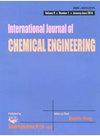泡沫铜硒化制备的硒化铜单体用于亚甲基蓝的高效光催化降解
IF 2.4
4区 工程技术
Q3 ENGINEERING, CHEMICAL
引用次数: 0
摘要
阻碍光催化技术用于工业废水中有机染料降解的一个关键挑战是,传统的粉状光催化剂暴露出有限的光吸收位点,并且表现出低效率的可回收性。为了克服这些挑战,本研究设计了一种一步合成单片硒化铜(CuSe)基光催化剂的工艺。表征结果充分支持了泡沫铜在硒化过程中的维护是单片光催化剂在光催化反应中保持结构完整性的前提。单片光催化剂表面被活性CuSe完全覆盖对于光催化活性位点的暴露和亚甲基蓝(MB)的有效降解至关重要。结果表明,cu基单片光催化剂在恶劣的pH条件和高浓度的MB条件下具有优异的MB降解性能。综上所述,本文所制备的cu基单片光催化剂在有机染料降解和工业废水净化方面有望取代传统的粉状光催化剂。本文章由计算机程序翻译,如有差异,请以英文原文为准。
Copper Selenide (CuSe) Monolith Fabricated by Facile Copper Foam Selenization for Efficient Photocatalytic Degradation of Methylene Blue
A critical challenge that impedes the application of photocatalytic techniques for organic dye degradation from polluted industrial effluents is that traditional powdery photocatalysts exposed limited photo-absorption sites and exhibited inefficient recyclability. To overcome these challenges, this study designed a one-step process to synthesize a monolithic copper selenide (CuSe)-based photocatalyst. The characterization results fully supported that the maintenance of the copper foam during the selenization process was the prerequisite for the monolithic photocatalyst to keep its structural integrity in photocatalytic reactions. The surface of the monolithic photocatalyst fully covered by active CuSe is crucial for the exposure of photocatalytically active sites and the efficient degradation of methylene blue (MB). It was found that the CuSe-based monolithic photocatalyst exhibited excellent MB degradation performances under harsh pH conditions and high MB concentrations. From these perspectives, it is reasonable to conclude that the CuSe-based monolithic photocatalyst as prepared is a promising alternative to traditional powdery photocatalysts for organic dye degradation and industrial effluent cleaning.
求助全文
通过发布文献求助,成功后即可免费获取论文全文。
去求助
来源期刊

International Journal of Chemical Engineering
Chemical Engineering-General Chemical Engineering
CiteScore
4.00
自引率
3.70%
发文量
95
审稿时长
14 weeks
期刊介绍:
International Journal of Chemical Engineering publishes papers on technologies for the production, processing, transportation, and use of chemicals on a large scale. Studies typically relate to processes within chemical and energy industries, especially for production of food, pharmaceuticals, fuels, and chemical feedstocks. Topics of investigation cover plant design and operation, process design and analysis, control and reaction engineering, as well as hazard mitigation and safety measures.
As well as original research, International Journal of Chemical Engineering also publishes focused review articles that examine the state of the art, identify emerging trends, and suggest future directions for developing fields.
 求助内容:
求助内容: 应助结果提醒方式:
应助结果提醒方式:


